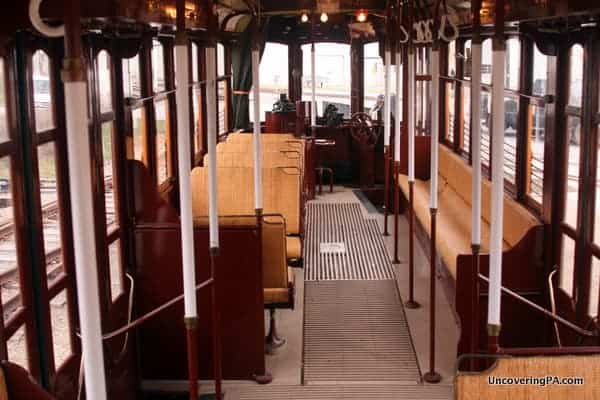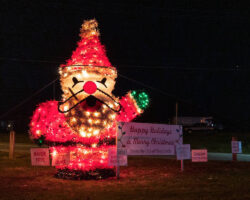If you haven’t figured it out yet from reading this site, I’m a huge train nut. Whenever I visit a new part of Pennsylvania, I always look for any museums or sites related to trains. So, when I discovered there was a trolley museum in Washington County, I was quite excited. Sure, trolleys aren’t exactly trains, but for my child-like obsession with trains, they are close enough.
The Pennsylvania Trolley Museum first opened its doors in June 1963 as the Arden Trolley Museum. The museum’s collection consisted of a handful of trolley cars and a short trolley ride. Fifty years later, the museum is now known as the Pennsylvania Trolley Museum and has a collection of 54 cars and a 2-mile long trolley track.
Visits to the site start in the Visitor Education Center, which has a 12-minute introductory video about the history of the trolley and also features a small museum and gift shop. While interesting, the real excitement of a visit starts with the trolley ride.
The trolley makes it’s way through a secluded section near the Washington County Fairgrounds before doubling back past the Visitor Education Center. Then it travels through the museum’s grounds and loops around before stopping in front of a large warehouse.
It’s inside this warehouse that the Pennsylvania Trolley Museum houses most of its collection.
Walking inside, it instantly reminded me of a smaller version of the Railroad Museum of Pennsylvania in Lancaster County. Trolley cars are set in rows with hallways in between giving visitors a chance to walk through the facility.
The cars are in various states of repair. Some look as though they came straight from the manufacturing plant, while others look like they have been sitting outside for decades. However, each one represents an interesting era of public transportation in America.
The collection itself ranges from a horse-pulled trolley car manufactured in the 1870s up to cars made in the 1980s. However, while the museum does have a few newer cars, most date from well over 80 years ago.
Walking through these historic streetcars that plowed the streets of many different Pennsylvania cities, I was enthralled with how beautiful something so utilitarian could be. Their history becomes even more remarkable when you know that many of these cars are the best, or even last, remaining cars of their class.
In addition to Pennsylvania trolley cars, the museum does preserve cars from several other regions of the country and even the world. One highlight is the 1911 streetcar that once plied the streets of Rio de Janeiro, Brazil. The other is their 1923 streetcar from New Orleans. It was this trolley car that was the basis for Tennessee Williams’ Broadway show, “A Streetcar Named Desire”.
This historic car is one of the ones that frequently escorts visitors around the grounds of the museum, so make sure to hop on it if you have the opportunity.
Overall, the Pennsylvania Trolley Museum is a great opportunity to learn about the streetcars that were once commonplace in American cities. For anyone that’s ever wondered about the abandoned rail lines in the middle of a city street, the museum will provide a great education. And, while the museum may be a bit historical for some, the trolley ride should be exciting enough to keep you entertained.
Note: My visit to the Pennsylvania Trolley Museum was hosted by the Washington County Visitors Bureau. As always, the opinions expressed in this article are my own.
Want to explore more spots in the area? Check out Washington County’s covered bridges, Meadowcroft Rockshelter, and the Greene County Historical Society Museum.






 "
"



